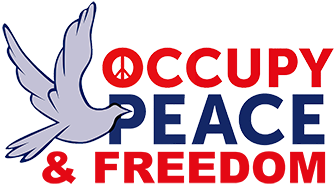Published: May 16, 2022 2.30pm EDT
Israeli police attacked mourners carrying the coffin of slain Palestinian-American journalist Shireen Abu Akleh on May 13, 2022, beating pallbearers with batons and kicking them when they fell to the ground.
Yet those who skimmed the headlines of initial reports from several U.S. media outlets may have been left with a different impression of what happened.
“Israeli Police Clash with Mourners at Funeral Procession,” read the headline of MSNBC’s online report. The Wall Street Journal had a similar headline on its story: “Israeli Forces, Palestinians Clash in West Bank before Funeral of Journalist.”
Fox News began the text of its article with “Clashes erupted Friday in Jerusalem as mourners attended the burial of veteran American Al Jazeera journalist Shireen Abu Akleh who was shot dead Friday when covering a raid in the West Bank city of Jenin.”
There is no mention in the headlines of these articles about who instigated the violence, nor any hint of the power imbalance between a heavily armed Israeli police force and what appeared to be unarmed Palestinian civilians.
Such language and omissions are common in the reporting of violence conducted by Israel’s police or military. Similar headlines followed an incident in April in which Israeli police attacked worshippers at Jerusalem’s Al-Aqsa Mosque during the Muslim holy month of Ramadan. Then, too, police attacks on worshippers – in which as many as 152 Palestinians were injured by rubber bullets and batons – were widely described as “clashes.”
And headlines matter – many Americans do not read past them when consuming news or sharing articles online.
Neutral terms aren’t always neutral
The use of a word like “clashes” might seem to make sense in a topic as contentious as the Israeli-Palestinian conflict, in which violent acts are perpetrated by both sides.
But as a scholar of Palestinian history and an analyst of U.S. media coverage of this topic, I believe using neutral terms such as “clashes” to describe Israeli police and military attacks on Palestinian civilians is misleading. It overlooks instances in which Israeli forces instigate violence against Palestinians who pose no threat to them. It also often gives more weight to official Israeli narratives than to Palestinian ones.
U.S. media have long been accused of misleading their audience when it comes to violence committed against Palestinians. A 2021 study from MIT of 50 years of New York Times coverage of the conflict found “a disproportionate use of the passive voice to refer to negative or violent action perpetrated towards Palestinians.”

Recent Comments